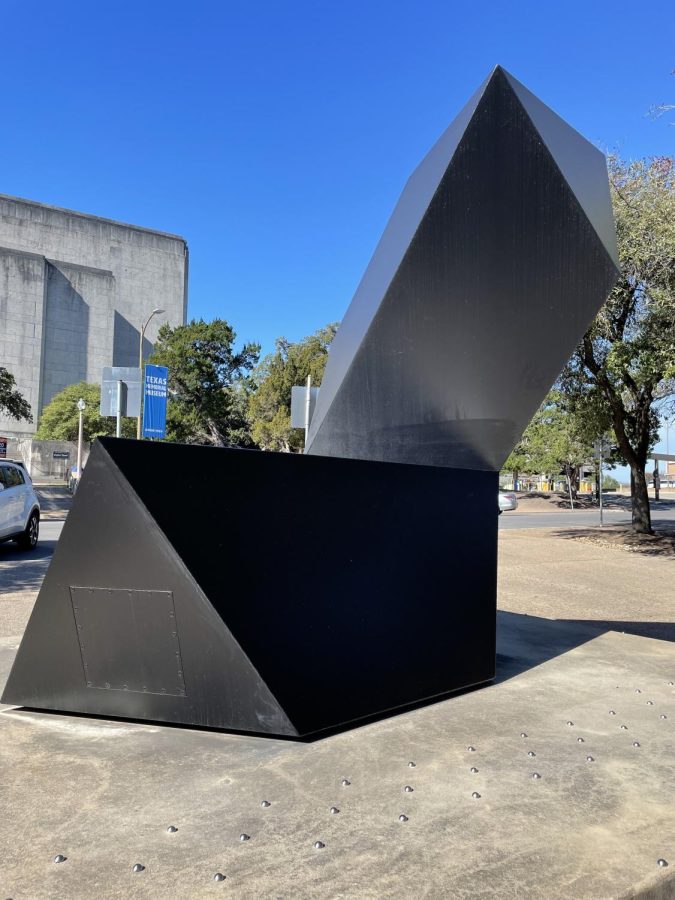Sculpture destruction caused by skating leads to frustration
May 5, 2022
Every day on her way to class, Weyatta Kpinkpin walks around Amaryllis, a black geometric sculpture that takes on different shapes as viewers walk around the piece. Looking at its sleek finish and straight lines, the neuroscience freshman said the large artwork is hard to miss and easy to appreciate.
However, at the start of the school year, students and staff began to find large scuff and scratch marks around the sculpture’s base.
Launched in 2008, UT Landmarks curates and protects artwork around campus and encourages students to engage with their 47 sculptures through events such as tours and performances. However, after discovering damage caused by skating on Amaryllis by Tony Smith, UT Landmarks campaigned to install metal skate stops and repaint and refurbish the sculpture’s phases. The process took several months, beginning last fall and finishing this April.
Though the process is considered complete, some scratches remain visible on the sculpture’s exterior. Kpinkpin said she enjoys the sculptures’ beauty around campus and is saddened by the thought of someone destroying one of them.
“The art sculptures bring life to the 40 Acres. They provide uniqueness because you can’t see these sculptures anywhere else,” Kpinkpin said. “To hear that some people are destroying art — I don’t like that, because there are other places to skate.”
Nisa Barger, the UT Landmarks assistant director for collections, said she felt frustrated by the trouble the team had to go through to rebuild Amaryllis for viewing. The team paid for the installation of metal stops to be inserted into the sculpture’s base to prevent skate wheels from rolling on the surface and also repainted the sheet metal back to its original color.
“(Amaryllis) was in terrible condition,” Barger said. “(It’s disappointing) that this work of art, which is very valuable, is treated with such disrespect… Skaters don’t have any idea how much work goes into repairing the damage they cause and how much money is required, but they must have some idea that what they’re skating on is of cultural importance.”
While Barger said the group who caused said damage was caught on camera, they are unsure what disciplinary actions have or will be taken. Barger said the harm caused by any type of skating affects the UT community as a whole, and she hopes individuals will begin to understand and acknowledge how their actions affect the community.
“Keeping these pieces in good shape (and) maintaining a level of care feels like an important thing to me,” Barger said. “(Public art is) something that enhances our everyday environment, but it’s also a really special thing for anyone interested in learning about art, to be able to just have these things in your space.”
Catherine Whited, the UT Landmarks education program coordinator, said she believes the lack of understanding from the community aided in problems with destruction of Amaryllis, but she believes that the staff handles situations in a mature way that does not change the sculpture.
“It is unfortunate, but some level of damage is unavoidable when you work with a public art collection. It indicates a lack of awareness about Landmarks and what we do for the community,” Whited said. “The preservation of these works means that subsequent generations of students, staff and faculty can enjoy them and learn from them.”



